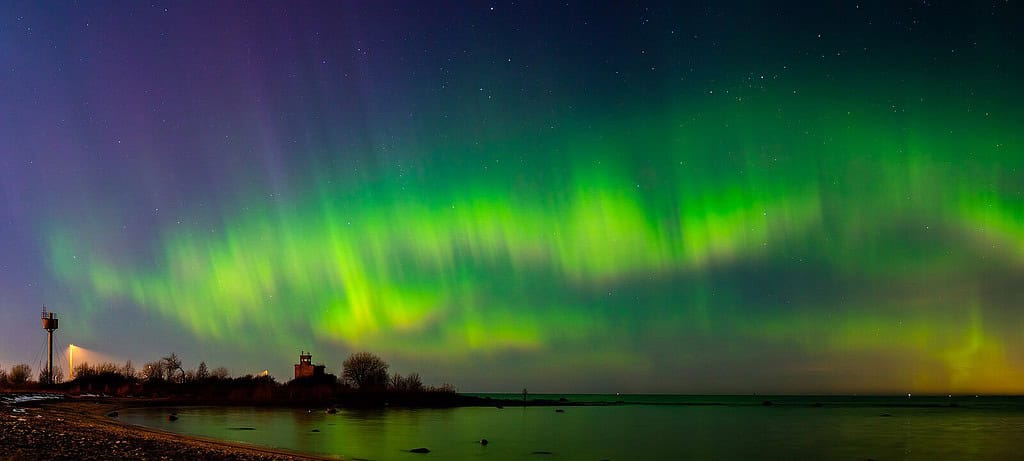
Auroras are some of the most captivating natural light displays on Earth, but the one on Christmas Day, 2022, was different. It was an exceptionally gigantic aurora in the polar cap region with some unique features. It also coincided with a period when the solar wind had almost completely disappeared. Now, researchers have finally figured out what happened.
Forming Auroras
Auroras are formed by interactions between the solar wind and the Earth’s magnetosphere. They’re produced by the precipitation of energetic electrons from the magnetosphere into the Earth’s atmosphere. When these electrons collide with atmospheric gases, they release energy in the form of light, creating the auroral displays we see.
There are two main types of auroras:
- discrete auroras, which are highly structured and variable;
- diffuse auroras, which are more uniform and show dynamic changes such as pulsations. These diffuse auroras generally occur in regions where the Earth’s magnetic field lines are closed, trapping particles from the magnetosphere.
But here’s the thing, in polar cap regions, Earth’s magnetic field lines are open, not closed. Therefore, direct precipitation of energetic electrons from the Sun, known as “polar rain,” is rare and usually weak, making polar cap auroras uncommon and less studied.
This is the type of aurora that was observed in December 2022. And it was the first time this phenomenon was witnessed from the ground.
Aurora rain

Normally, aurora displays are very dynamic. They move and pulsate, create shapes and patterns in the sky, and constantly shift. Meanwhile, this polar aurora was remarkably uniform and vast. It was observed with ground-based cameras and extended far away from their field of view, shifting very slowly. The smooth, extensive nature of this aurora suggested it was a new phenomenon, not fitting into any previously identified classes of polar cap auroras.
To confirm the nature of this aurora, scientists led by Keisuke Hosokawa from the University of Electro-Communications in Tokyo, looked at satellite data. Specifically, they compared ground-based images with satellite data from the Special Sensor Ultraviolet Scanning Imager (SSUSI) onboard the Defense Meteorological Satellite Program (DMSP) satellites.
The satellite images showed smooth, less-structured emissions covering almost the entire polar cap, consistent with the ground-based observations. The spatial structure of this aurora matched well with previous limited observations of polar rain auroras.
It’s all in the electrons
Polar rain occurs when suprathermal electrons travel directly from the Sun along open magnetic field lines. These electrons, known as “strahl,” originate from the Sun’s corona and travel along field lines connected to the Earth’s polar cap. Intense polar rain tends to occur during periods of low solar wind density, which minimizes scattering and allows a direct flow of electrons.

The combination of ground-based and satellite observations provided a detailed view of the aurora, revealing complex internal structures and dynamic characteristics. The aurora displayed anti-sunward motion, moving at speeds ranging from 200 to 1000 meters per second, with an average speed of approximately 400 meters per second. This motion likely represents the movement of magnetic flux tubes connected to the Sun, dragged by the streaming solar wind.
During the December 2022 event, the solar wind density dropped to extremely low levels. This “disappearance” of the solar wind allowed for a direct and intense flow of suprathermal electrons from the Sun to the Earth’s polar cap. The result was the exceptionally bright and extensive aurora observed.
This offers us another piece of information regarding these polar auroras. It suggests that during periods of extremely low solar wind density, the polar cap can be filled with intense auroral emissions. This observation challenges previous assumptions about the nature of polar cap auroras. There’s a lot of science behind these beautiful phenomena. In a way, this makes them all the more beautiful.
The study was published in Science Advances.









